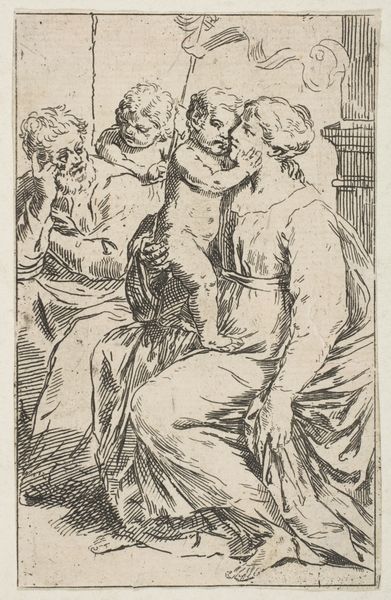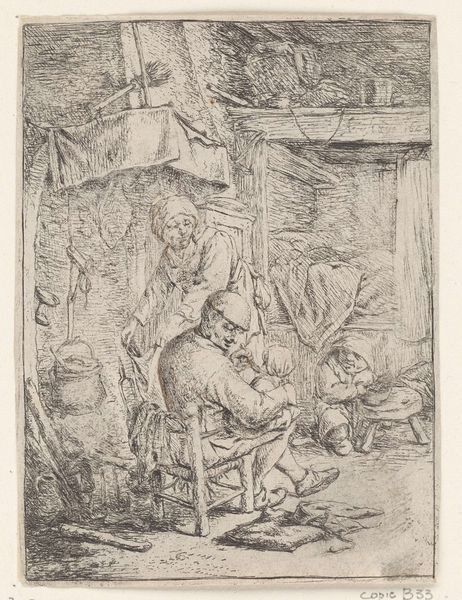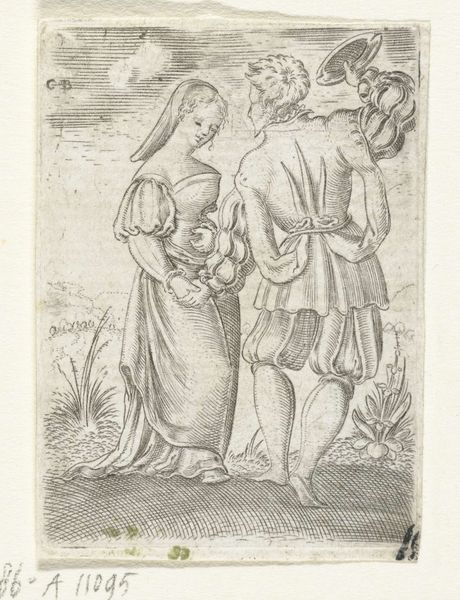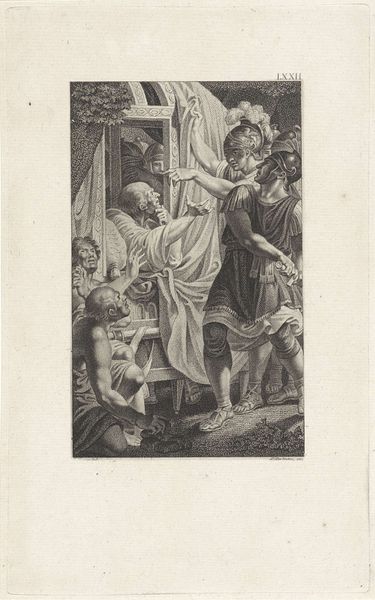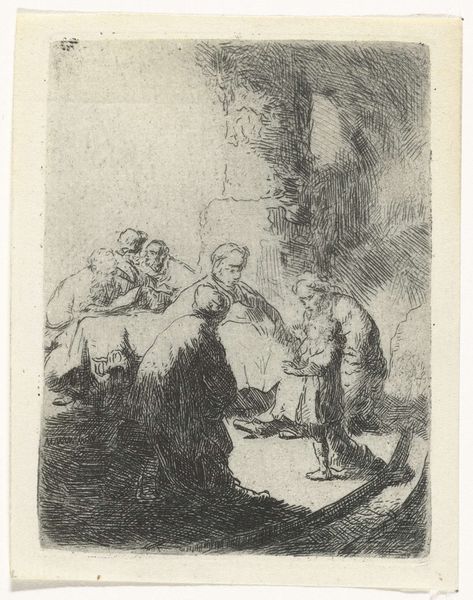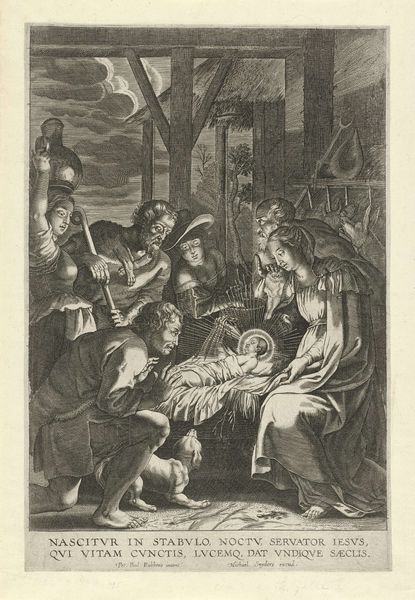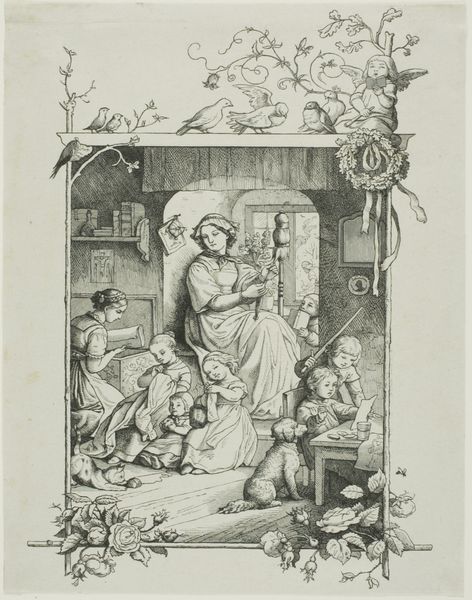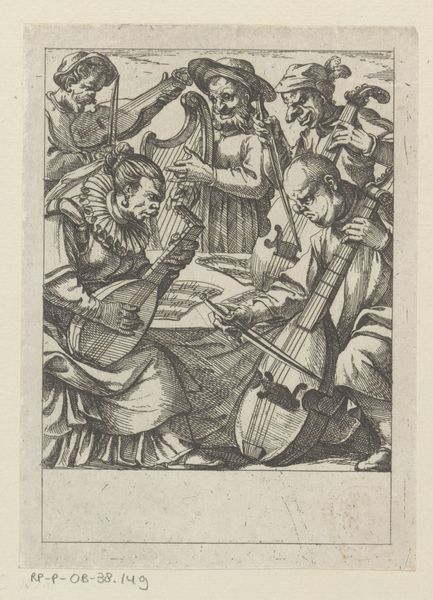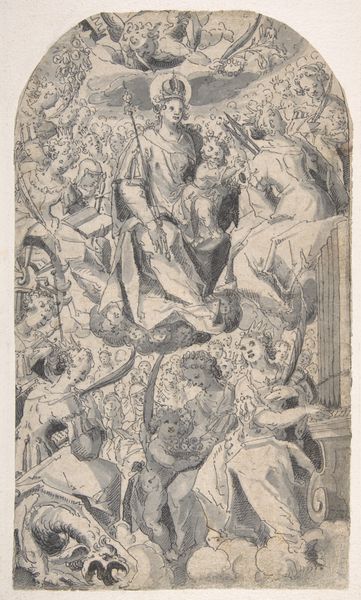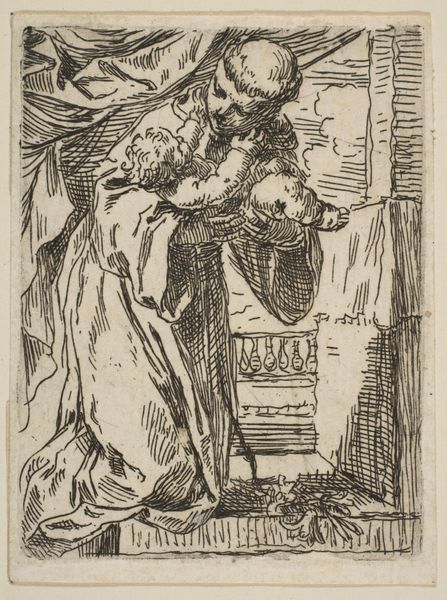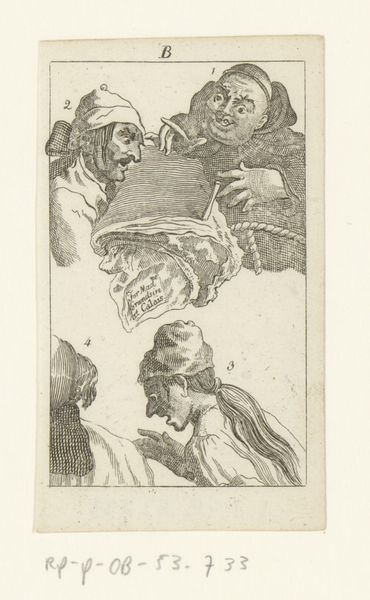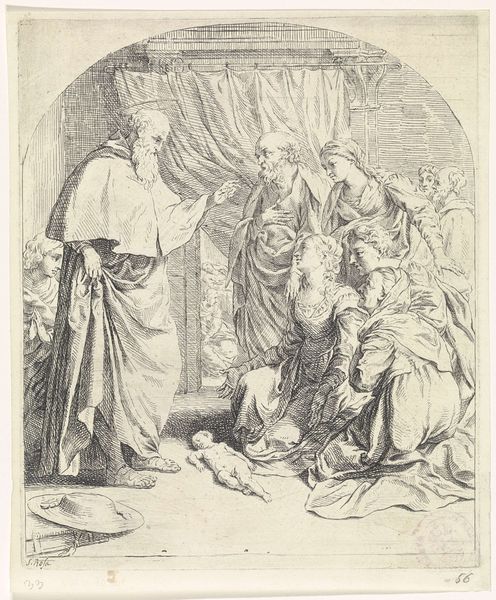
drawing, ink, engraving
#
drawing
#
baroque
#
figuration
#
ink
#
history-painting
#
engraving
Dimensions: height 145 mm, width 121 mm
Copyright: Rijks Museum: Open Domain
Curator: Giuseppe Caletti offers us a rather dramatic rendition of a classic biblical scene in his engraving, "Salome en de beul met het hoofd van Johannes de Doper," created sometime between 1605 and 1665. Editor: My immediate impression is one of suppressed horror, yet a distinct clarity. It’s chillingly well-composed for such a gruesome subject. Curator: Gruesome is definitely the right word. Looking at Salome, it's difficult not to think about power structures and the ways women's sexuality was, and sometimes still is, used as currency in political power plays. Editor: Absolutely. Her finger points not just at John's head, but metaphorically at the corrupt forces enabling such horror. We can see similar depictions of female power – think Judith slaying Holofernes – but Salome embodies a different kind of symbolic weight. There’s a calculated coldness. Curator: The depiction of John the Baptist’s severed head underscores this dynamic of power. John’s decapitation can be interpreted not just as the loss of life, but also the silencing of his radical voice, his message of social and religious reform extinguished by those who benefit from the status quo. Editor: Observe the details. John's head, hovering there almost like a trophy, embodies both dread and the ultimate silencing. Also notice the butcher’s stance; a certain weariness almost – as if performing a job he neither relishes, nor understands the magnitude of. It echoes themes of complicity. Curator: Complicity absolutely resonates here. It’s critical to examine how art reflects the insidious normalisation of violence and the consequences when societal structures fail to protect the vulnerable. Caletti makes us confront those failures directly. Editor: Yes, these enduring narratives, and their visual representation, remind us of cyclical patterns in history and the constant tension between power, justice, and morality. Curator: Indeed. These dialogues across centuries provide a powerful lens to see ourselves, today. Editor: Food for thought! Thanks to Caletti, we continue the conversation.
Comments
No comments
Be the first to comment and join the conversation on the ultimate creative platform.
